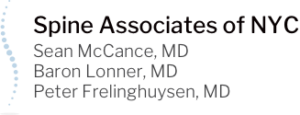Rob Gronkowski for Lower Back Disc Injury
Recently, it was confirmed that New England Patriot tight end Rob Gronkowski will undergo surgery this June to repair a lower back disc injury, which has been troubling him since November of last year. Unfortunately, this is not the first or the last time we will see this type of headline in the news, as the rate of sports-related injuries continues to rise. Gronkowski is no stranger to surgery. In 2009, the two-time Pro Bowler missed his entire junior season at the University of Arizona, due to a similar, though unrelated, disc injury. Following the 2011-12 season, Gronkowski had surgery for strained ligaments in his ankle. Most recently, he underwent four surgeries in the past seven months on his left arm, which he broke last November and reinjured in December. His latest injury highlights the significant injury rate sustained by professional football players. Head trauma and spinal conditions are becoming increasingly more common, and only now are we beginning to understand the long term effects of injuries suffered more than 20 or even 30 years ago. According to the U.S. Consumer Product Safety Commission, more than 920,000 people 18 and under were treated for football-related injuries in hospital emergency rooms, doctors’ offices

